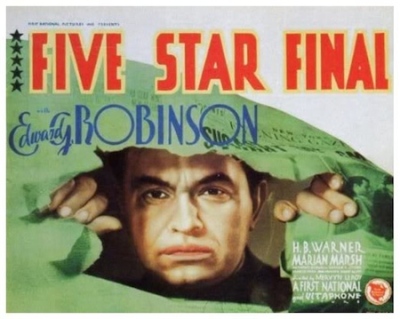
Questar Entertainment on May18 will release a 6-DVD Box set of 7 classic films noir. Questar has kindly sent me a complimentary promotional copy.
The nicely boxed set presents each DVD in it’s own case with high quality stills and artwork, and the DVD menu has a cool animated noir motif and voice-over. While the titles are in the public domain and the image quality is variable, all but two of the transfers are of higher quality than files currently available on the Internet. Sound quality on all transfers is very good with no hiss.
The Movies
Disc 1:

DOA ( 1950) ‘I want to report a murder…mine.’ Edmond O’Brien stars as an accountant whose number is up when he is poisoned, and spends his last desperate hours trying to find out who ‘killed’ him and why.
A taut thriller with a bravura performance from Edmond O’Brien as Frank Bigelow. From the Cardinal Pictures factory and directed by Rudolph Maté, this movie packs so much in 83 minutes. It starts off slow, but once the action shifts from a sleepy rural burg to San Francisco and LA, the pace is frenetic. The streets of these cities are filmed in deep focus, and there is a sense of immediacy in every scene.
The image quality is good, but I have seen a better transfer on late-night TV.
Disc 2:

Detour (1945) ‘What did you do with the body?‘ A hitchhiker gets into the wrong car and picks up the wrong woman. Roger Ebert: ‘No one who has seen it has easily forgotten it’.
Edgar G. Ulmer’s cult poverty-row noir . Filmed on a shoe-string, this story of a guy so dumb he blames fate for the consequences of his own foolishness, is pure pulp noir, with a career-best from Anne Savage, as the street-wise conniving dame, who incredulously falls for the sap.
This is the best transfer of Detour I have seen.
Disc 3:
The Stranger (1946) Orson Welles stars in this tense thriller as a small-town professor who will stop at nothing to conceal his Nazi past, with Edward G. Robinson as the Nazi hunter out to expose him.
A strong thriller with Orson Welles directing and playing the lead in a screenplay by Victor Trivas. Edward G Robinson is solid – as always – as the investigator, with the beautiful Loretta Young perfect as the innocent and loyal wife. Welles’ deft direction and the camera-work of Russell Metty transform an over-the-top thriller into a moody and intelligent noir, where Jungian concepts of the unconscious are woven with a taut psychological study of the deranged mind of a desperate man.
Image quality is good.
Disc 4:

Scarlet Street (1945) stars Edward G. Robinson as a henpecked husband who falls under the spell of a scheming femme-fatale.
This classic film noir from Fritz Lang, shattered the closed romantic realism of Hollywood. It is unremitting in its pessimism. A dark mood and pervading doom are devastating in their intensity.
The Strange Love of Martha Ivers (1946 ) Stars Barbara Stanwyck and Van Heflin. A dark tale of small town secrets, obsession, and murder.
A very dark noir rife with fascinating psychological puzzles.
The image quality for these two transfers is poor to fair. For Scarlet Street (1945) the KINO digitally restored DVD can’t be beat. I have seen a better transfer of The Strange Love of Martha Ivers on television.
Disc 5:
Killer Bait (aka Too Late for Tears) (1949) stars Lizabeth Scott as a woman who will do anything to keep $60,000 that falls into her lap.
From the opening scene of the silhouette of a car speeding up a winding road on a hill outside LA one dark night, you know you are in noir territory. Soon a preposterous chance event launches a wild descent into dark avarice and eroticised violence as perverse and relentless as fate itself.
Image quality is Ok.
Suddenly (1954) stars Frank Sinatra in his most controversial role as a psycho who holds a family hostage while plotting to assassinate the president.
A fast-paced b-thriller with a viciously violent protagonist.
Image quality is Ok.
Disc 6:
Extras:
- Featurette: What is Film Noir?
- Featurette: Femme Fatale – The Noir Dame
- Film Noir poster gallery
- 38 Film Noir trailers
The two short featurettes are good intros but fairly unsophisticated. What makes them very entertaining is the skillful editing of themed montages of film clips. There were a few posters I hadn’t seen before in the Poster Gallery. The trailers included a few sleepers I was not aware of, with the image quality variable.
The Verdict
The high quality of the packaging make the set compelling, and the better image quality of five of the seven movies over downloads is a definite plus, but the recommended retail price of US$49.99 is on the high side. It gets down to how much you value the convenience of easily loading a DVD into your DVD-player and watching the movies on a large screen television. Amazon is taking orders for the special price of US$44.99. At this price, with each movie costing you only US$6.42, the set is Ok value. All the pictures, bar Suddenly, are essential noirs, and for many chronic noiristas, a good quality transfer of Detour would be worth a lot more.










